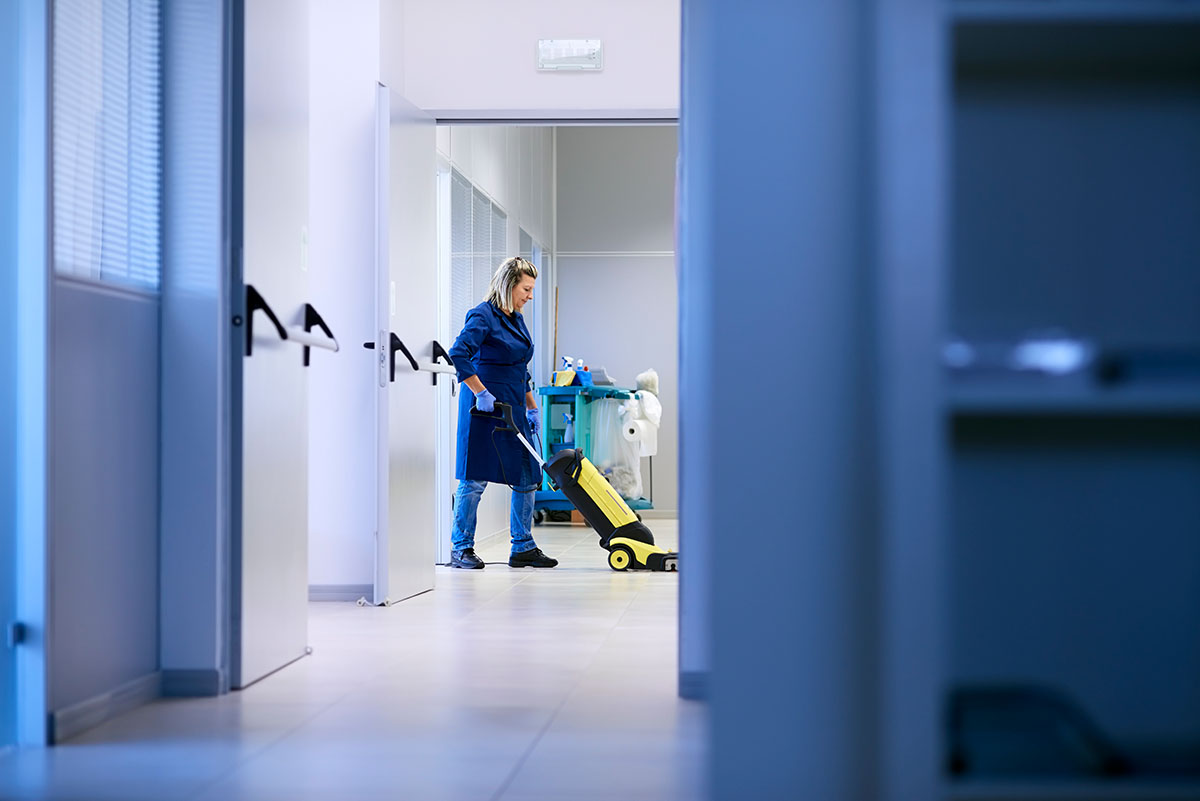Risk management and housekeeping go hand in hand. If you aren’t maintaining good housekeeping practices, you aren’t succeeding in minimizing risks, because housekeeping is about more than just keeping things clean.
The Importance of Good Housekeeping in the Workplace
In addition to cleanliness, good housekeeping means keeping work areas neat and orderly, maintaining halls and floors free of slip and trip hazards, and removing waste materials and other fire hazards from work and storage areas.
Careless or sloppy housekeeping practices have consequences, including:
- illness or injuries to staff or visitors
- property damage and losses
- reduced productivity or quality
Of course, all of these consequences can have consequences of their own, primarily financial repercussions like citations and fines—in some cases, very hefty fines—but in more extreme cases, legal consequences and even personal liability.
Good housekeeping in the workplace, whether it’s a commercial building or community hall, requires planning, accountability and management, but the benefits far outweigh the investment.
Housekeeping & Fire Prevention

One of the first indicators of a good Loss Control / Risk Management Program is good housekeeping. Effective housekeeping helps to control workplace hazards and is a basic part of incident and fire prevention.
As per the National Fire Code, as well as any provincial or municipal requirements, combustible materials are not permitted to accumulate in elevator shafts, ventilation shafts, exits or service rooms.
Service rooms may include boiler rooms, furnace rooms, incinerator rooms, garbage storage rooms, janitor’s closets, air conditioning or heating appliance storage rooms, or anywhere where pumps, compressors or electrical equipment is stored.
Equipment stored in these areas are potential ignition sources. Electrical equipment in particular, as a result of electrical arcing and the heat that is produced when these systems are activated, can easily cause a fire if heat or energy strikes a flammable material. Watch the CityReporter Housekeeping vlog for more information.
Housekeeping Programs & Inspections
A good housekeeping program plans and manages the movement and storage of materials, and sets the ground rules for safe storage and handling procedures. As part of any good housekeeping program, workers are trained on how to work safely with the products they use, and how to recognize and react to potential hazards.
A good housekeeping program identifies and assigns responsibilities for:
- clean up, during and after shift
- daily, weekly and monthly cleaning and maintenance tasks
- waste disposal, removal of unused materials
- inspection to ensure tasks have been completed
The final step to any housekeeping program is inspection. Regular inspections are the only way to verify that your housekeeping program is working as required, as well as to identify any potential deficiencies in your program so that improvements can be made.
Better Inspections with CityReporter
CityReporter Inspection, Management & Workflow Tracking Software is a user-friendly, intuitive and responsive tool that digitizes the inspection process and makes critical information and documentation available anywhere, anytime.
CityReporter helps teams in the public and private sectors manage:
- compliance requirements
- inspections and inspection documentation
- staff management and work orders
- assets and equipment tracking
- code enforcement, including Fire Code enforcement
Ready to eliminate paperwork, data entry and labour inefficiencies and improve risk management in your facility? Contact CityReporter today.



